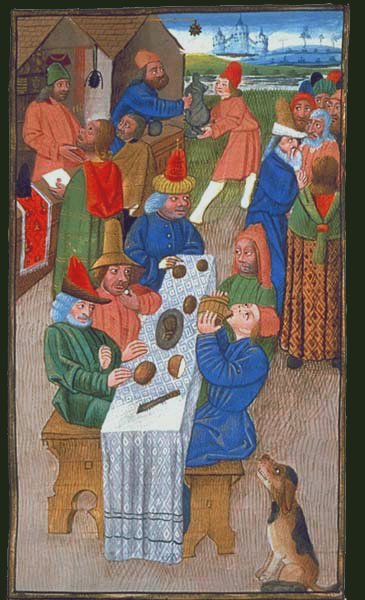When the King of Faerie calls in a favor, what can you do? Follow your gift. Find the magic. Travel in time. Save the world... How hard can it be?
Reality TV host Ben Harper has a problem: he owes the king of Faerie a favor. So now he has to track down the three parts of a Viking arm-ring, and return them to their place in time. This takes him through the wolf-haunted forests of Viking Age Wessex, the rowdy back streets of Shakespeare's London, and a derelict Georgian country house. Partnered with caustic, shape-changing Raven and guided by a slightly wacky goblin diary, Ben must rediscover his own gifts while facing his doubts and the queen of Faerie's minions, who will do anything to stop him.
The Dragon Ring, the first in the Harper Errant series, is a time travelling mythic adventure that takes you to Old England, and leaves you enchanted.
The Dragon Ring, the first in the Harper Errant series, is a time travelling mythic adventure that takes you to Old England, and leaves you enchanted.
**Q&A with Maggie Secara**
What do you love best about your own writing or anyone
else’s? What makes you fall in love with a book?
The
music! That is, the words themselves. I started out as a poet, and I’ve been
singing from an early age in choirs or small groups, and that’s all influenced
how I use and respond to language. There’s music in a balanced sentence, in the
way the words bounce off each other, that tells me I’ve chosen the right ones.
Everything
else builds on that, whether the sensory details of a description or the flash
and dazzle of a conversation; the hero’s awareness of the weight of the sword
in his hand or the giddy realization that he’s in love. When I’m reading, those
are the passages that make me stop and read them out loud just for the feel of
the words in my mouth. When I’m not sure about a sentence or a paragraph of my
own, I always read it aloud and listen for the stumbling places, and don’t move
on until I’m content with the sound as well as the meaning. Oh yes, the meaning
too. There’s a story going on here, and characters to meet. The words may
sing and dance, but are they doing their job? If not, if I have to cut them
away and put them in a box, I will. Tough love.
The music! That is, the words themselves. I started out as a poet, and I’ve been singing from an early age in choirs or small groups, and that’s all influenced how I use and respond to language. There’s music in a balanced sentence, in the way the words bounce off each other, that tells me I’ve chosen the right ones.
Speaking of characters, what do you do to make your characters both believable and interesting to the reader?
Story is why we pick up a book, but the characters are why we read it. A plot isn’t events, it’s people reacting to events. If you don’t believe in the characters, you probably won’t buy any of the rest. I think what makes a character come to life is the little, often secret things—skills or beliefs or events in their past-- that even their friends may not know.
In
The Dragon Ring, for example, ex-pat
Ben Harper is the star of a popular reality show on British television, who practically
grew up at the Renaissance Faires in California. In King’s Raven (coming this Christmas), Miss Susan Pickering, a perfectly sensible Victorian
spinster struggling to manage on her own, keeps a sketch book in her handbag
and a photographic memory in her head. I can’t plan those things. In general,
I’m completely unaware of them until the character comes up and says Hey! Look
at this! In some cases, those details turn out to be critical to the story—and
what a happy surprise that is! Other times, they’re more or less incidental,
though never irrelevant. Either way, those details are what sets one blue-eyed
hero apart from another, and helps to make him real.
Without asking ‘where do you get your ideas”, can you tell us
about the inspiration for your latest book, The
Dragon Ring?
This is
actually kind of a funny story, if you know my friend Ari. Ari is a college
professor, a brilliant scholar and folklorist, a devoted husband and father, and
a gifted writer with a devastating wit. Also, I’ve known him a very long time.
Well, I’d wanted to tackle NaNoWriMo (National Novel Writing Month) for some
time, and was racking my brain for a starting point. Then late one night in a
hotel room in the middle of nowhere, a question popped into my head: “What if
Ari had to solve a mystery?” That tickled me so much I knew it was the start of
a great idea—but still only the start. For one thing, there had to be a puzzle
worthy of his talents. And there had to be something precious at stake to be
worthy of his time. And being Ari, myth and folklore would be central, and that
led me straight down the road to fair Elfland. I stayed up all night filling up
the last blank pages in an old spiral with the questions I always ask and
sketching in possible answers until something like a plot started to come
together. Of course, it all came out quite different as the story plan
developed, but the idea of a clever, charming hero who was also a family man
was where it all began.
What do you find most interesting about setting a story set
in the past?
A
lot of the historical writers I know would probably say it’s historical events,
but the big events are too big to me, and I tend to shy away from them. When a
story idea starts to form, it always has a historical setting, but it’s the place,
times, and peoples themselves that I find fascinating. So I dig up letters,
inventories, wills, landscape and costume pictures, as well as street maps and
floor plans. The minutiae of everyday life shows me people who find their challenges
on days when the world isn’t violently changing around them. When their world
intersects with Faerie, the characters meet those challenges in unexpected
ways. And there’s my story
There
are exceptions, of course. The central historical point in The Dragon Ring is a meeting between King Alfred and a Viking war
leader called Guthrum. The meeting actually took place, though the details are
vague—perfect for fiction. One thing we do know, as I discovered while I was in
the planning phase, is that they swore an oath on a “holy ring”. And that was
the key to everything.
I understand you do a lot of research for your books, but
when I read a novel, I want a good story not a history lesson. How do you
handle that?
As a reader, I
hate authors who over-explain. The trick is to provide a sensory impression of
place and time without burying the story in mere facts. I want you to feel like
you’ve really been there with Ben and Raven, not like there’s going to be a
quiz later. Mind you, I’m fussy about accuracy in the fine details as well as
the broad generalities. I want to know how houses were furnished, the kitchen
tools they used, and the way they spoke to their children and servants as well
as to their lovers—and all these things change over time. The better handle I
have on those details, the easier it is to decide what to use and what to leave
aside. The more comfortable I feel in, say, Elizabethan London, the easier it
is to just tell the story and let the details fall into place just as you would
in a contemporary setting.
Thank you, Maggie, and best of luck with THE DRAGON RING!
Find Maggie on Facebook












